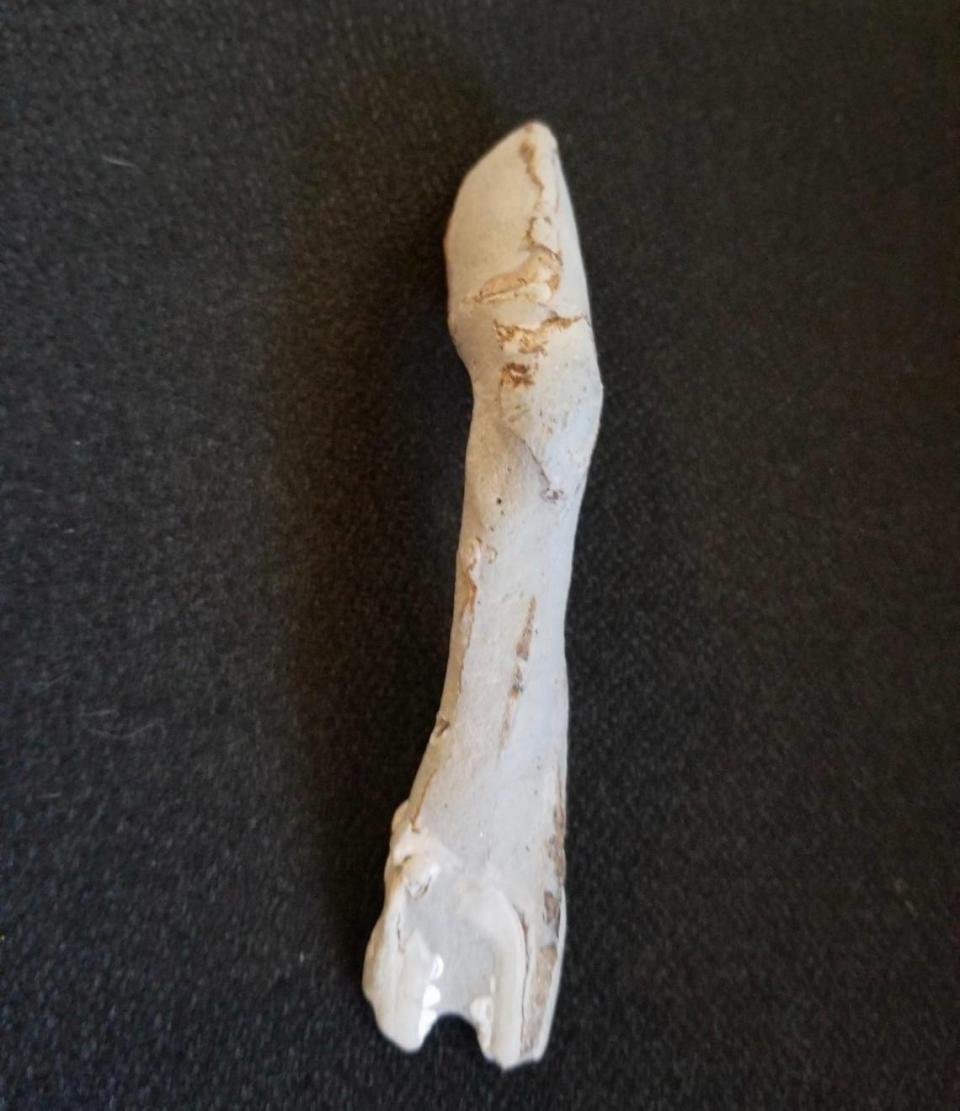Woman finds prehistoric crab claw while cleaning trash off of Assateague Island beach
While cleaning trash off the beach on Assateague Island, a woman found a crab claw. However, it wasn’t just an ordinary claw. It’s likely from the prehistoric era.
The fossil was estimated to be up to two million years old.
The woman was walking along the island, owned by both Maryland and Virginia, while “picking up trash and rescuing upside down horseshoe crabs” when she found an item with a unique shape, a Dec. 2 National Parks Service news release for the island said.
“It seemed as though it had teeth and an eye socket.”
She reached out to the Smithsonian in the hopes the renowned institution could identify it.
A Smithsonian paleontologist told her that they were “quite certain” the fossil is a crab claw dating back 12,000 to two million years ago from the Pleistocene age.
The Pleistocene era began about 2.58 million years ago and ended 11,700 years ago, according to Britannica.
The paleontologist came to the conclusion of the claw’s age “given the nature of other fossils,” found in the area, the release said.
A photo of the fossil shared to Facebook shows it next to a modern day blue crab claw, highlighting its similar shape, while another photo showed it on its own.

The woman, identified as Sharon Conn by The Daily Times, found the claw in October while on Virginia’s side of the island, according to the outlet.
The fossil didn’t “readily erode” due to the protection of extra rock around it that formed a “consolidated matrix,” the paleontologist told Conn, according to the release.
“The claw did erode a bit though – which is why it isn’t immediately distinguishable as a claw,” they added.
“The tips are gone and parts of the infilled area where the original flesh would have been has shown through, making the whole specimen look a bit odd.”
Conn was told by the paleontologist that fossils discovered on public lands, like the crab claw, are protected under the 2009 Paleontological Resources Preservation Act, according to the release.
He suggested that she return it, and she did so to the Assateague National Island Seashore.
“We are so happy to be able to add it to our small collection of fossils,” the release said.
Assateague Island is famous for its wild horses that roam the beaches.
McClatchy News has reached out to the island and the Smithsonian for further comment.
Dinosaur misidentified for decades turns out to be new species. ‘Big, big deal’
It took three years for a boy to catch this record-breaking catfish in Texas lake
Mysterious tusk recovered off California coast is from a mammoth, researchers say
Homeowner captures an alligator to bring home and show his kids, Texas officials say

 Yahoo Finance
Yahoo Finance 